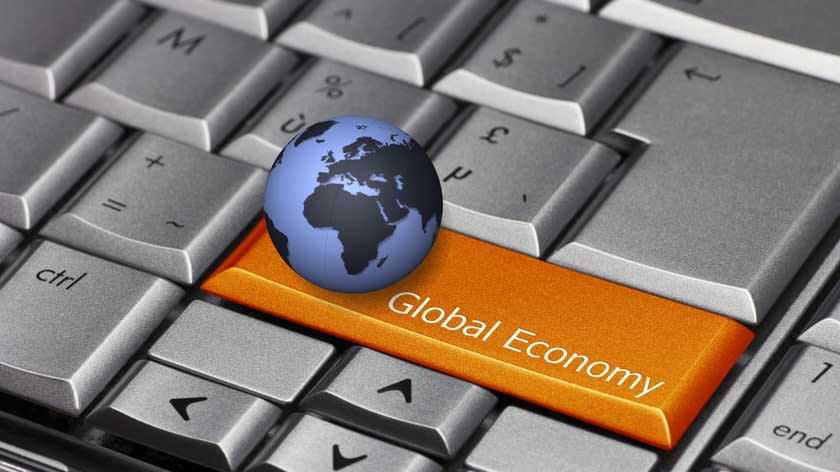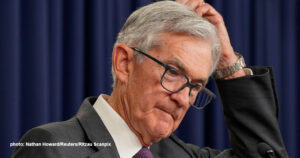Økonomien i det tyske erhvervsliv, og især forventningerne, er særdeles dystre. Tyskland står midt i en teknisk recession – med økinomisk nedgang i fjerde kvartal sidste år, og der er også udsigt til minusvækst i dette kvartal. ZEW-indekset for industriens forventninger faldt voldsomt i marts til minus 39,3 mod plus 54,3 i februar, og det er effekten af krigen i Ukraine og sanktionerne, der er problemet. Tysk industri er stærkt afhængig af energi fra Rusland, og prisstigningerne rammer tysk industri hårdere end alle andre. Desuden er industrien, især bilindustrien, afhængig af russiske metaller. Det går bedre i den kinesiske industri med en pæn vækst i januar og februar, men der er modvind for industrien i den kommende tid, skriver ABN Amro, der ikke mener, at regeringens vækstmål på 5,5 pct. kan holde. Banken tror på 5,1 pct.
German recession, China headwinds

Euro Macro: Germany heading for a technical recession. China Macro: Strong data, rising headwinds.
Euro Macro: Germany heading for a technical recession
Germany’s ZEW expectations index plummeted in March. The index staged its sharpest monthly drop since the start of the series, falling to -39.3, down from +54.3 in February. The current conditions index declined as well, falling to -21.4 from -8.1.
The levels of the two ZEW indexes combined signal a contraction in GDP. Given that Germany’s GDP declined in 2021Q4 this would imply that the country moved into a technical recession in 2022Q1. While the end of Omicron-related lockdown measures have lifted economic activity during Q1, this positive effect seems to have been more than outweighed by the start of the Ukraine-Russia conflict.
Within the group of biggest eurozone countries, Germany is the most dependent on gas supplies from Russia, with around 65% of all Germany’s gas imports coming from Russia, making the country highly vulnerable to disruptions in gas supply.
On top of that, the industrial sector is suffering from supply disruptions and price rises of other commodities that are essential inputs in Germany’s (car) industry, such as palladium, nickel and iron ore. Indeed, the details of the ZEW report show that expectations for the car industry, the chemicals and pharmaceuticals industries and mechanical engineering dropped the most.
A contraction in GDP in Q1 was also signaled by the Bundesbank’s Weekly activity index, that suggested that GDP declined in the last thirteen weeks up to 13 March. We have penciled in -0.2% qoq, following -0.3% in 2021Q4.
China Macro: Strong data, rising headwinds
Yesterday morning, China’s ‘monthly’ activity data were published: due to the Lunar New Year period, January and February data were combined. The numbers came in much stronger than expected, in contrast to the recent downward pressure on Chinese stock markets.
Industrial production rose by 7.5% yoy in Jan/Feb combined (consensus: 4.0%, Dec-21: 4.3%), with high-tech manufacturing one of the key drivers. Retail sales grew by 6.7% yoy in nominal terms (consensus: 3.0%, Dec-21: 1.7%), with the consumption of both goods (including cars) and services (including catering) showing a strong rebound. Fixed investment in urban areas accelerated to 12.2% yoy ytd (consensus: 5.0%, 2021: 4.9%), with infrastructure investment profiting from fiscal stimulus and property investment showing a rebound.
Despite the pick-up in activity, the unemployment rate in urban areas rose to an eleven month high of 5.5%, driven by pandemic-related disturbances. The strong January/February data show that the targeted easing of monetary and fiscal support has started to filter through.
That said, drags are intensifying, as the Ukraine conflict will weigh on global growth and add to inflationary pressures, while a flare-up of Omicron cases is causing renewed local lockdowns including in large cities such as tech hub Shenzhen with 17.5m inhabitants.
All in all, we expect Beijing to continue with piecemeal easing of monetary and fiscal policy, as well as a cautious relaxation of macroprudential standards including for real estate. Despite this ongoing policy support, reaching this year’s growth target of 5.5% – as announced during the annual National People’s Congress last week – may prove quite ambitious. We have left our 2022 growth forecast at 5.1% for now.








